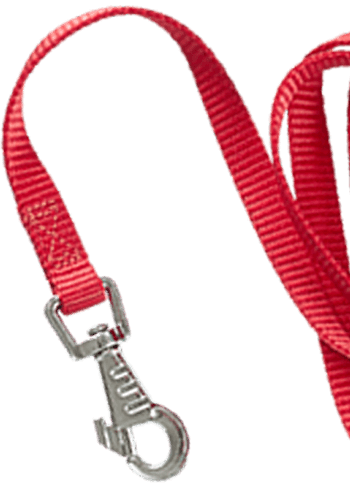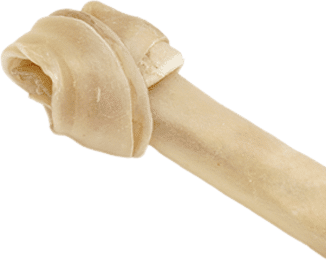


Let’s talk about exercise for Labradors.
Just like us, Labradors need plenty of exercise on a daily basis. Whether you have a young or old dog, they all need to get the blood flowing to stay healthy and live long happy doggie lives.
Regular exercise with your Labrador is very beneficial for you both. Exercise stimulates neuron growth in the brain, encourages the production of endorphins (with a known mood-boosting effect), helps strengthen your bones and muscles, improves blood pressure, and can significantly help with depression.
Are you having a hard time figuring out how much exercise your lab needs? Answers vary drastically from one dog to another. You really need to go by your dog’s overall health.
In this article, you’ll learn what kind of dog exercise is best for Labradors, what their bodies need based on their age, and what types of activity all dog breeds respond well to, especially when it comes to keeping that excess weight off.
The amount of exercise to give your Labrador depends mostly on the age of the dog. During its youthful years, you’ll need to pay close attention to how long you let your dog play.
The key to taking your Labrador puppy out for exercise is to be patient. As a pup, your lab is going to have a lot of energy, but they’re not going to be able to go out for long periods without lots of rest in between.
However, as they mature, you’ll be able to take them out and even allow them to play in a group as they’ll be well-trained, vaccinated, and able to stay awake through the day.
There’s no general rule to the energy levels of Labradors, unlike some other breeds like Collies. Some labs are athletic, and thus need more exercise than others. Also, certain Labradors are genetically programmed to be energetic and have high metabolism rates, whereas others are more laid-back.
Here are some exercise guidelines a new lab owner can follow to make sure their dog gets the right workout.
For the first three months, a Labrador puppy doesn’t need any form of “structured” exercise routine.
They’re just small, over-exert themselves too frequently, and tire easily—throwing off their health and happiness. With older dogs or children, a lab puppy may well try to keep up with them and exhaust themselves before they reach their adult size and stamina.
Hold off on structured games and other forms of heavy physical activity for the first three months.
After those first three months, it’s important to begin more structured, planned exercise activities with your labrador. This will set the stage for long-term, healthy exercise habits.
Use the five-minute rule to calculate how long your Labrador puppy needs to play.
This rule states that you should take your Labrador puppy out for at least five minutes of exercise per month of age (up to twice a day) until he or she is fully grown. This can be anything from a walk around the block to a run in the dog park.
How old your dog is will make a difference in their stamina. To determine how much exercise your dog needs, first take their age into consideration.
12-month-old labs need at least an hour and a half of exercise per day. Labs that are four years old and above need between one and two hours of exercise per day.
It’s common for breeders to overstate the need for exercise and physical stimulation. The truth is Labradors can lead a perfectly healthy life with just an hour of daily active playtime.
Playing fetch is a great exercise for dogs—they love it, and it’s a great way to bond with your dog. The Labrador Retriever was bred to retrieve game for hunters. That means they naturally love to play fetch. They’ll bring the ball back to you over and over again, which is the perfect cardio workout for your dog.
All you need is a toy for playtime and room for running around. Tug-of-War is less cardio-oriented but helps with muscle mass and body structure in growing dogs. Plus, they love it!
Agility training for dogs is a fun game for puppies. It requires that you prepare your puppy with a proper agility training course. Agility training is great for completing a total-body, structured workout, while also providing mental stimulation for your labrador.
This involves activities such as going through walkways, tunnels, and hurdles to reach the other end. You will need to train your lab to engage in the activity and this involves proper instruction.
Usually, you shouldn’t start training for the agility course until your pet has grown to adulthood. It’s a good idea to have some obedience training before trying the course, too.
When it comes to having fun with your dog on the weekends, Frisbee is one of the most exciting activities out there. It perfects your dog’s athletic abilities and helps build muscle mass. Still, you’ll need to be careful when choosing the right dog toy for your pup. Find one that fits his size and abilities, as well as your own personal comfort level.
One of the things that may be hard for some owners is taking their dogs for a walk. Either due to space or having a small yard, it may be difficult to get their puppies out every day.
At the same time, exercise is extremely important for your puppy’s physical and emotional well-being. The good news is that, with a little creativity, indoor exercise can be just as viable (and fun!).
Here are a few ideas you can try at home.
A dog can be trained to use a treadmill and enjoy it, but the experience will take time. Start with making sure they’re comfortable with the sight of one in action. Then, gradually introduce them to the sound and feel of the machine moving beneath them by having them sit on it as it’s stationary.
Eventually, they’ll get comfortable enough to run alongside you on the treadmill, either alongside or in front of you as you run.
Use everyday things found around the home or office to create an obstacle course. This is a great way to get your pup’s heart pumping and moving at the same time. It also boosts their energy levels and problem-solving skills.
For example, you might use old boxes and trash bags to make a tunnel, chairs or stools to jump across, and other furniture for your puppy to climb. At first your puppy may not catch on, but with effective use of the treat and lots of encouragement, you can help it learn as it goes.
Hide-and-seek is a classic game for toddlers, but, let’s be honest: your puppy is basically a toddler. So it’s a great way to keep your ]little fur friends active!
Hide a treat around the house, and let your puppy work to find it. If they can get the food very easily, they’ll lose interest in the game. That’s why it’s important to make it a little difficult for them, but not too hard.
As you hide treats around the room, remember to make sure they are not hiding somewhere that is unreachable. Don’t put their treats on top of high shelves, or else your pup might fall off and hurt itself.
Always be alert to your puppy’s needs, and understand how to read the body language and non-verbal signs from dogs. Don’t force the puppy to do anything it doesn’t like; if you do, you’ll only end up with a grouchy pet, and no fun for anyone around.
It’s also important to be aware of when it is and isn’t appropriate to engage in training. A general rule of thumb is that if your puppy seems a little lethargic, ill, or just generally “off,” it might be a good idea to give it a day off.
Of course, every dog is different, and you’ll have to figure out what works for you and your pet over time.
Puppies only want to have fun. Make sure that all the activities are not just what you enjoy but what is enjoyable for the puppy. Otherwise, they may get frustrated and stop cooperating with you. Include treats and praise whenever they accomplish something.
All dog breeds respond positively to lots of physical affection and verbal affirmation. This will make the activity more enjoyable for the puppy. Keep fun as the central theme and good health will flow.
Lab owners, take note: maintaining the health of an adult Lab is all about consistency. And this starts with walks at a young age.
Take regular walks with your dog, no matter the weather conditions. Walk at the same time each day in order to create an exercise pattern that both you and your dog can stick to.
Don’t worry if the puppy is not running along with you in the beginning. Maybe you can get the puppy used to a leash and casually walk through your neighborhood with it. That way, you can vary the activity occasionally.
In six months, increase the amount of time your dogs are running to 15 minutes. This keeps their energy high and stops weight gain as they mature.
As a dog owner, your foremost responsibility is protecting the health and safety of your pet. Insufficient exercise causes health problems in dogs, like hip dysplasia especially those already prone to hip or joint problems.
A high-energy dog like a labrador takes a lot of work, but with the right form of exercise, your lab puppies will grow into strong and healthy adult labs that’ll live long lives. Keep your dog free of health problems with an exercise regimen that meets their unique exercise needs, and you’ll have a best friend for many years to come.